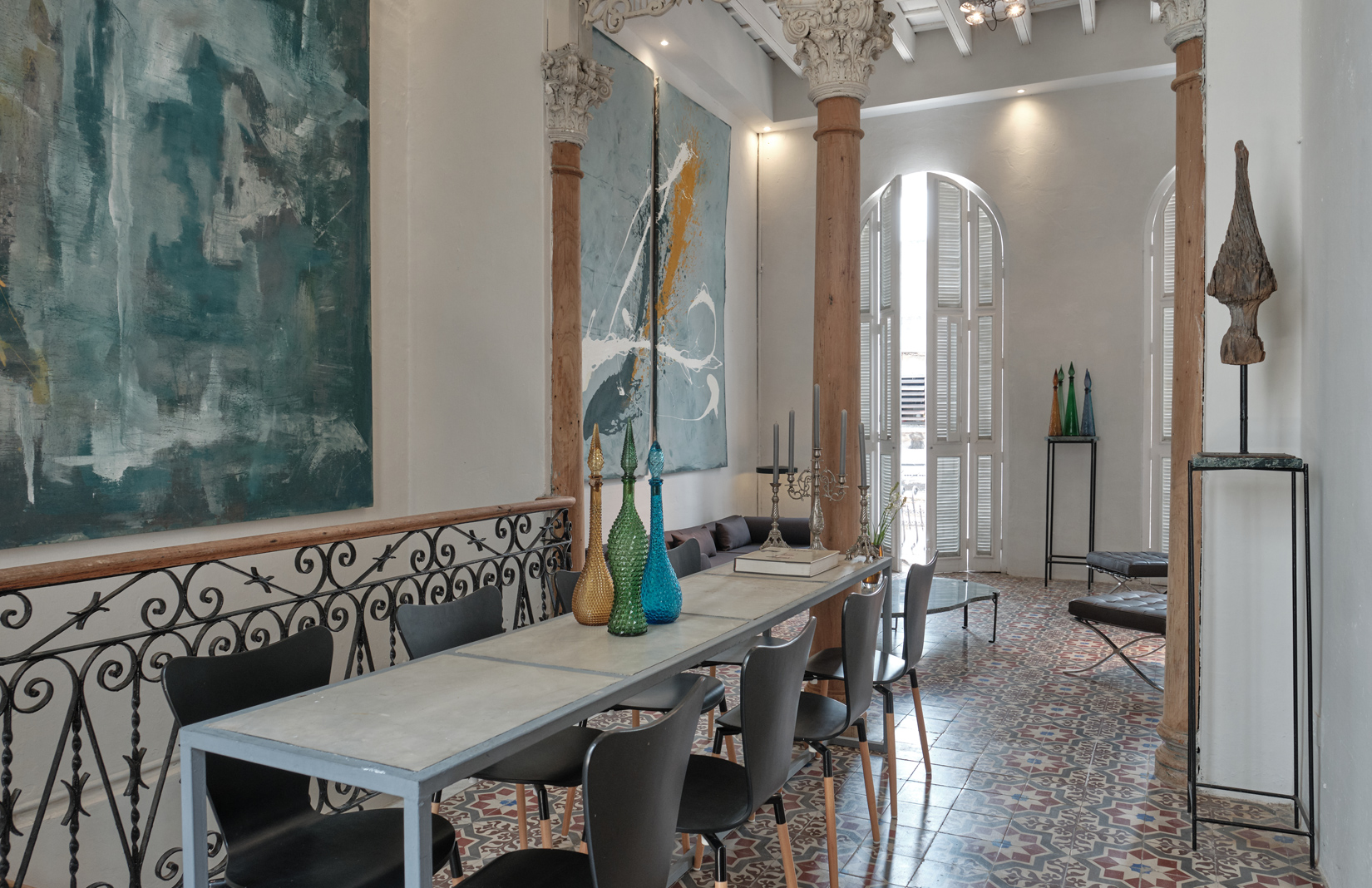For decades fibre and textile art weren’t recognised as significant within the arts industry, relegated to mere ‘hobby crafts – a derogatory term that devalued and dismissed the works of womxn artists. Today its been reclaimed and championed by the feminist movement, with textile artists exploring gender, politics and intimacy in their works. Here are 12 womxn shaping the narrative.
Xenobia Bailey

The supernaturalist and cultural activist
Just like the Warrior Queen of Ancient Palmyra that inspired Bailey to go by the name of Xenobia, she’s a rebel at heart. Her interest in craftsmanship took full bloom after university; drawing influence from African philosophies, she combines needlecraft and funk aesthetics to de-traumatise lost fables. Mothership 1: Sistah Paradise’s Great Walls of Fire Revival Tent’ is a fine example.
Vanessa Barragāo

The complex environmentalist
The textile industry is one of the most environmentally polluting globally, so Barragāo has dedicated her talents to educating art appreciators about the coral reef ecosystem. Six years after graduating from Lisbon University, she opened an eco-friendly design studio where she integrates ancestral techniques to recycle yarn as bold creations that pay tribute to nature’s underwater architecture.
Lucy Sparrow

The sexual liberalist
British contemporary artist Lucy Sparrow celebrates the fact that art has no boundaries or age limits. Predominantly using felt fabric to make kitschy objects, she evokes emotional responses from her audience – nostalgia, humour and fun – while encouraging conversation around cultural taboos ranging from sex to pharmacology, mental health and community. Sparrow’s notable projects include Madame Roxy’s Erotic Emporium and The Corner Shop and her environs democratic and immersive spectacles.
Ana Maria Hernando

The ethereal visionary
Beyond its original purpose in the fashion industry, tulles has spurred new waves of femininity – one that breaks away from social constructions and explores flexibility in beauty. This is something Argentinian artist Ana Maria Hernando can relate to. Fuelled by rebellion, Hernando’s latest work utilises yards of pastel-toned mesh to create site-specific installations that reframe familiar silhouettes and fashion forms in the context of architecture. She often combines both to colourful effect.
Sheila Hicks

The shapeshifter
Born during the Great Depression, nomadic artist Sheila Hicks spent most of her life on the road. Extensive travel across continents sparked an interest in global weaving culture, thus defining her six-decade career and sealing her reputation as a pioneer in her medium. Hicks’ formula of wrapping and weaving raw materials has produced a wide array of hand-woven sculptural works that surprise and delight with their tactility and scale.
Chiharu Shiota

The conscious creator
Japanese artist Chiharu Shiota describes yarn as having an inherent tension, like human relationships, and the perfect softness to mirror her emotions. This makes it the ideal medium to explore human existence – a recurring theme of her large-scale installations that leave audiences feeling isolation and even fear.
Tau Lewis

The self-taught extraordinaire
Brooklyn-based, Canadian-born creative Tau Lewis constructs life-sized shrines that investigate Black identity and agency. In her first solo show: Triumphant Alliance of the Ubiquitous Blossoms of Incarnate Souls, she foraged household materials during her travels to assemble objects and create portraits that pay tribute to forgotten ancestors.
Joana Vasconcelos

The hypnotic sculptor
Being the first and youngest artist to exhibit at the Palace of Versailles is one of many feathers in Joana Vasconcelos’s cap. The Portuguese sculptor de-contextualises existing objects and transforms them into artworks that audiences can immerse themselves in. They are often cloaked in irony, such as Vasconcelos’s psychedelic guitar sculpture, which nods to the anti-war movement.
Billie Zangewa

The domestic empowerer
Malawi-born, Johannesburg-based creator Billie Zangewa is the only 2D artist to grace our list. But while the self-proclaimed feminist’s tapestries are flat, her subject matter and imagery are inherently spatial. In a bid to reclaim racial and gender stereotypes, she features herself in homely scenes hand-sewn as tapestries that represent self-empowerment. In Swimming Lessons, she embroidered silk to symbolise human imperfection.
Alexandra Kehayoglou

The artful adventurer
Life often imitates art, but for Argentine Kehayoglou, it’s the places she draws inspiration from. Her extensive repertoire of unique masterpieces -– created using a weaved and stitched method – includes memories of the landscapes she’s visited over time. Her artwork is a form of eco-activism and an outcry against deforestation and devastation.
Anges Hansella

The native muralist
Interweaving her passion for architecture and macrame, Anges Hansellla is a self-taught Indonesian knotter and emerging artist whose debut installation spans more than 37 ft. Hansella’s trio of wall hangings are titled Mountain, Ocean and Sunset, and decorate entire buildings. They incorporate indigenous techniques that illustrate majestic waves, coral and birds and blur the line between architecture and art.
Nnenna Okore

The cultural consumer
Australian-born, Nigerian-raised Nnenna Okore is a protean artist, sculptor, scholar, educator and environmentalist. Okore focuses on informing her audience of the cultural consumption and economics within Nigeria. Additionally, her tactile installations combine de-constructive, and reconstructive techniques, organic materials, and childhood sounds to create multi-sensory experiences.























